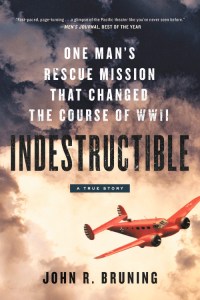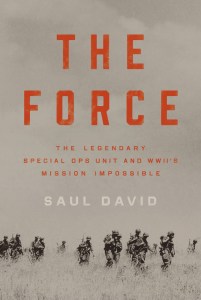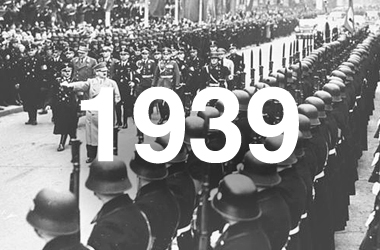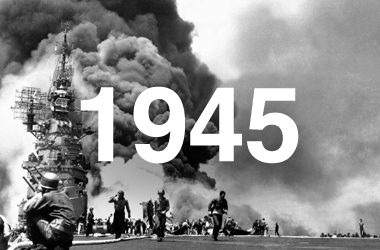World War II History Books 1943
February 2, 1943: Germans Surrender at Stalingrad
During the battle and shortly after its conclusion, scores of Red Army commanders and soldiers, party officials and workers spoke with a team of historians who visited from Moscow to record their conversations. The tapestry of their voices provides groundbreaking insights into the thoughts and feelings of Soviet citizens during wartime.
Legendary sniper Vasily Zaytsev recounted the horrors he witnessed at Stalingrad: "You see young girls, children hanging from trees in the park.[ . . .] That has a tremendous impact." Nurse Vera Gurova attended hundreds of wounded soldiers in a makeshift hospital every day, but she couldn't forget one young amputee who begged her to avenge his suffering. "Every soldier and officer in Stalingrad was itching to kill as many Germans as possible," said Major Nikolai Aksyonov.
These testimonials were so harrowing and candid that the Kremlin forbade their publication, and they were forgotten by modern history -- until now. Revealed here in English for the first time, they humanize the Soviet defenders and allow Jochen Hellbeck, in Stalingrad, to present a definitive new portrait of the most fateful battle of World War II.
March 2 – March 4, 1943: Battle of the Bismarck Sea
From the knife fights and smuggling runs of his youth to his fiery days as a pioneering naval aviator, Paul Irving "Pappy" Gunn played by his own set of rules and always survived on his wits and fists. But when he fell for a conservative Southern belle, her love transformed him from a wild and reckless airman to a cunning entrepreneur whose homespun engineering brilliance helped launch one of the first airlines in Asia.
Pappy was drafted into MacArthur's air force when war came to the Philippines; and while he carried out a top-secret mission to Australia, the Japanese seized his family. Separated from his beloved wife, Polly, and their four children, Pappy reverted to his lawless ways. He carried out rescue missions with an almost suicidal desperation. Even after he was shot down twice and forced to withdraw to Australia, he waged a one-man war against his many enemies -- including the American high command and the Japanese--and fought to return to the Philippines to find his family.
Without adequate planes, supplies, or tactics, the U.S. Army Air Force suffered crushing defeats by the Japanese in the Pacific. Over the course of his three-year quest to find his family, Pappy became the renegade who changed all that. With a brace of pistols and small band of loyal fol,lowers, he robbed supply dumps, stole aircraft, invented new weapons, and modified bombers to hit harder, fly farther, and deliver more destruction than anything yet seen in the air. When Pappy's modified planes were finally unleashed during the Battle of the Bismarck Sea, the United States scored one of the most decisive victories of World War II.
Taking readers from the blistering skies of the Pacific to the jungles of New Guinea and the Philippines to one of the the war's most notorious prison camps, Indestructible traces one man's bare-knuckle journey to free the people he loved and the aerial revolution he sparked that continues to resonate across America's modern battlefields.
June 20 – October 7, 1943: New Georgia Campaign
In the early hours of July 5, 1943, the destroyer USS Strong was hit by a Japanese torpedo. The powerful weapon broke the destroyer's back, killed dozens of sailors, and sparked raging fires. While accompanying ships were able to take off most of Strong's surviving crewmembers, scores went into the ocean as the once-proud warship sank beneath the waves--and a young officer's harrowing story of survival began.
Lieutenant Hugh Barr Miller, a pre-war football star at the University of Alabama, went into the water as the vessel sank. Severely injured, Miller and several others survived three days at sea and eventually landed on a Japanese-occupied island. The survivors found fresh water and a few coconuts, but Miller, suffering from internal injuries and believing he was on the verge of death, ordered the others to go on without him. They reluctantly did do, believing, as Miller did, that he would be dead within hours.
But Miller didn't die, and his health improved enough for him to begin searching for food. He also found the enemy--Japanese forces patrolling the island. Miller was determined to survive, and so launched a one-man war against the island's occupiers.
Based on official American and Japanese histories, personal memoirs, and the author's exclusive interviews with many of the story's key participants, The Castaway's War is a rousing story of naval combat, bravery, and determination.
July 25: Collapse of Facist Italy
December 3 – December 9: Battle for Monte La Difensa
In December of 1943, as Nazi forces sprawled around the world and the future of civilization hung in the balance, a group of highly trained U.S. and Canadian soldiers from humble backgrounds was asked to do the impossible: capture a crucial Nazi stronghold perched atop stunningly steep cliffs. The men were a rough-and-ready group, assembled from towns nested in North America's most unforgiving terrain, where many of them had struggled through the Great Depression relying on canny survival skills and the fearlessness of youth.
Brought together by the promise to take part in the military's most elite missions, they formed a unique brotherhood tested first by the crucible of state-of-the-art training-including skiing, rock climbing, and parachuting-and then tragically by the vicious fighting they would face. The early battle in the Italian theatre for the strategic fort cost the heroic U.S.-Canadian commando unit-their first special forces unit ever assembled-enormous casualties.
Yet the victory put them in position to continue their drive into Italy, setting the stage for the Allies' resurgence toward victory in WWII. The unit, with its vast range of capabilities and mission-specific exercises, became a model for the "Green Berets" and other special forces groups that would go on to accomplish America's most challenging undertakings behind enemy lines.
By clicking ‘Sign Up,’ I acknowledge that I have read and agree to Hachette Book Group’s Privacy Policy and Terms of Use
Explore More World War II History Books










